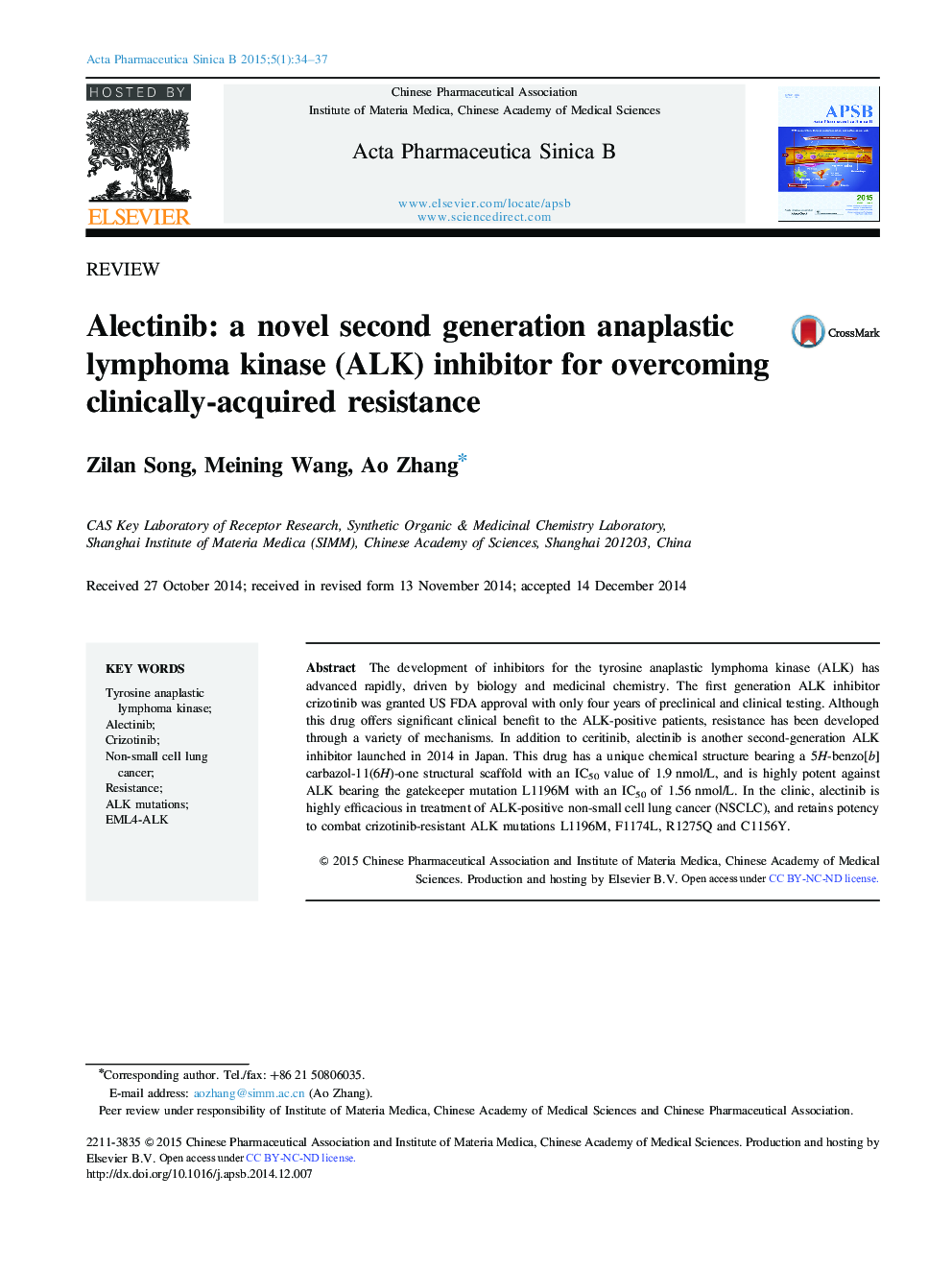| Article ID | Journal | Published Year | Pages | File Type |
|---|---|---|---|---|
| 2474746 | Acta Pharmaceutica Sinica B | 2015 | 4 Pages |
The development of inhibitors for the tyrosine anaplastic lymphoma kinase (ALK) has advanced rapidly, driven by biology and medicinal chemistry. The first generation ALK inhibitor crizotinib was granted US FDA approval with only four years of preclinical and clinical testing. Although this drug offers significant clinical benefit to the ALK-positive patients, resistance has been developed through a variety of mechanisms. In addition to ceritinib, alectinib is another second-generation ALK inhibitor launched in 2014 in Japan. This drug has a unique chemical structure bearing a 5H-benzo[b]carbazol-11(6H)-one structural scaffold with an IC50 value of 1.9 nmol/L, and is highly potent against ALK bearing the gatekeeper mutation L1196M with an IC50 of 1.56 nmol/L. In the clinic, alectinib is highly efficacious in treatment of ALK-positive non-small cell lung cancer (NSCLC), and retains potency to combat crizotinib-resistant ALK mutations L1196M, F1174L, R1275Q and C1156Y.
Graphical abstractThe fast development of inhibitors for the tyrosine anaplastic lymphoma kinase (ALK) has been reviewed, especially for alectinib, another second-generation ALK inhibitor launched in 2014 in Japan, which retains potency to combat crizotinib-resistant ALK mutations.Figure optionsDownload full-size imageDownload as PowerPoint slide
